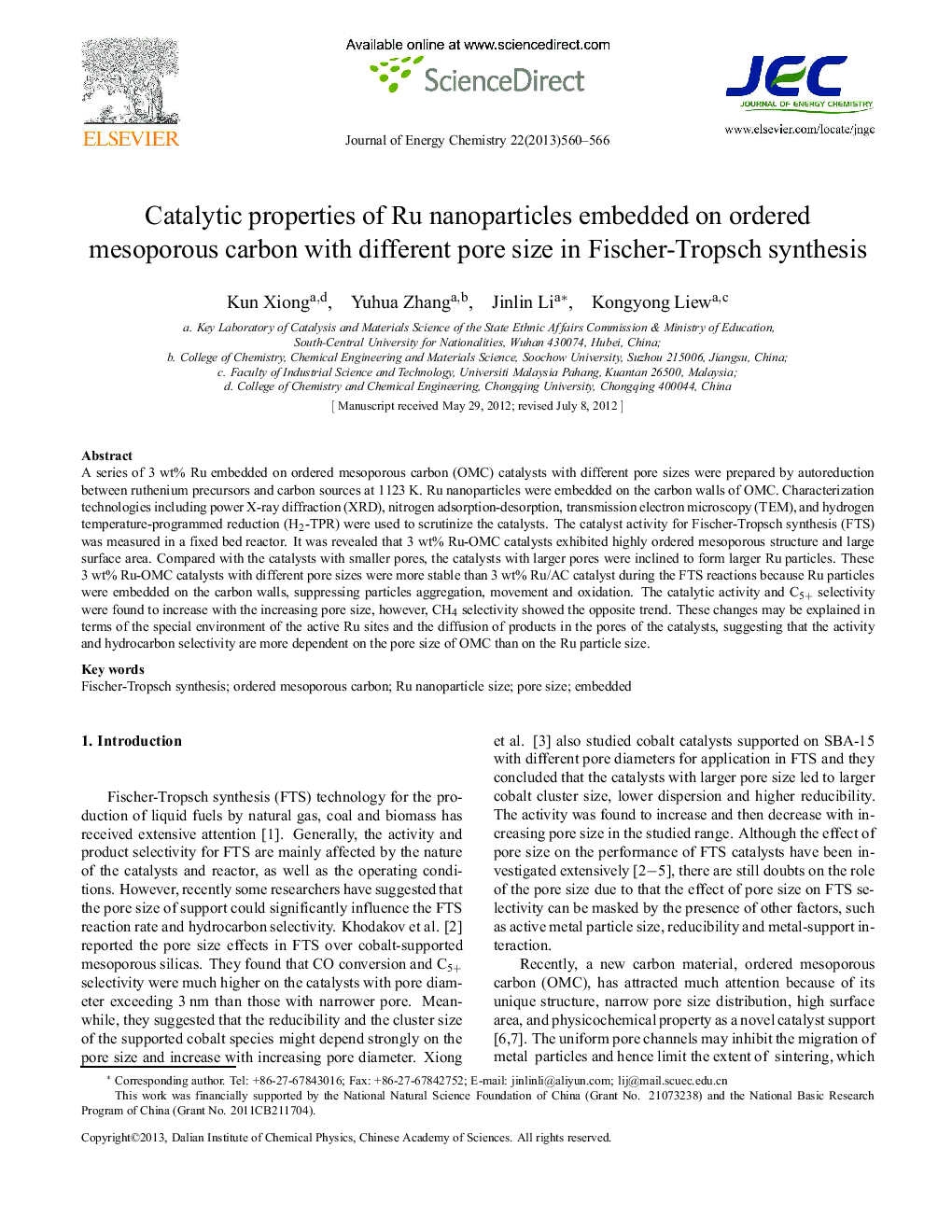| Article ID | Journal | Published Year | Pages | File Type |
|---|---|---|---|---|
| 64014 | Journal of Energy Chemistry | 2013 | 7 Pages |
A series of 3 wt% Ru embedded on ordered mesoporous carbon (OMC) catalysts with different pore sizes were prepared by autoreduction between ruthenium precursors and carbon sources at 1123 K. Ru nanoparticles were embedded on the carbon walls of OMC. Characterization technologies including power X-ray diffraction (XRD), nitrogen adsorption-desorption, transmission electron microscopy (TEM), and hydrogen temperature-programmed reduction (H2-TPR) were used to scrutinize the catalysts. The catalyst activity for Fischer-Tropsch synthesis (FTS) was measured in a fixed bed reactor. It was revealed that 3 wt% Ru-OMC catalysts exhibited highly ordered mesoporous structure and large surface area. Compared with the catalysts with smaller pores, the catalysts with larger pores were inclined to form larger Ru particles. These 3 wt% Ru-OMC catalysts with different pore sizes were more stable than 3 wt% Ru/AC catalyst during the FTS reactions because Ru particles were embedded on the carbon walls, suppressing particles aggregation, movement and oxidation. The catalytic activity and C5+ selectivity were found to increase with the increasing pore size, however, CH4 selectivity showed the opposite trend. These changes may be explained in terms of the special environment of the active Ru sites and the diffusion of products in the pores of the catalysts, suggesting that the activity and hydrocarbon selectivity are more dependent on the pore size of OMC than on the Ru particle size.
Graphical abstractRu-OMC Fischer-Tropsch catalysts were prepared by embedding Ru nanoparticles on OMC walls and these catalysts were more active and stable than Ru/AC catalyst.Figure optionsDownload full-size imageDownload as PowerPoint slide
